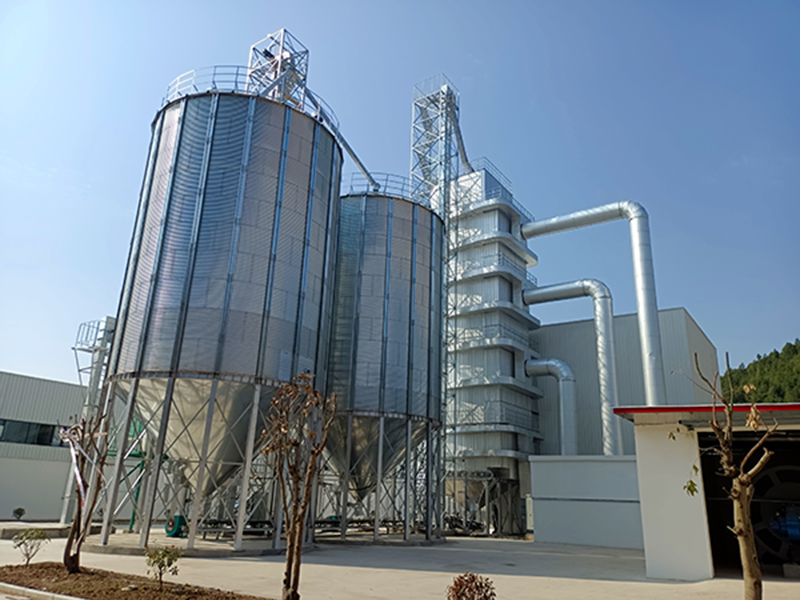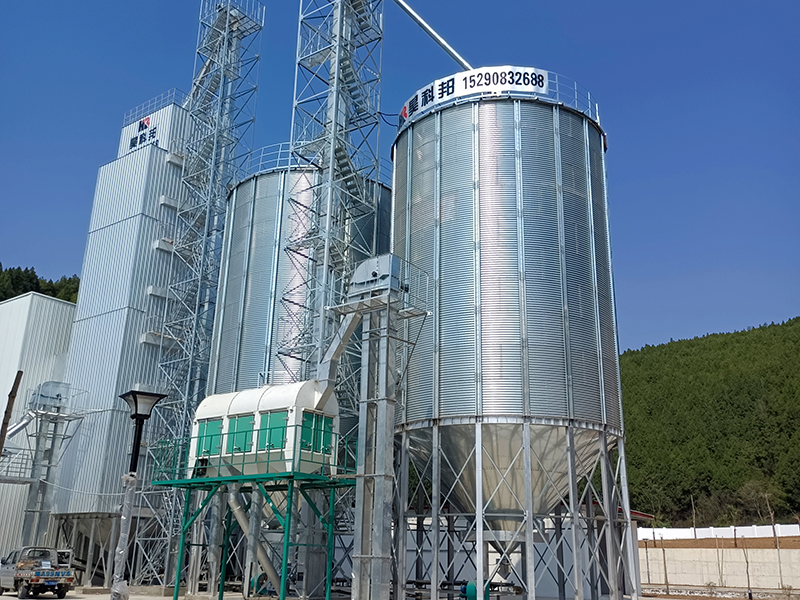The rise of barley silo simplifies grain storage. This article mainly discusses the construction structure of the silo and its supporting equipment, delving into how barley silos store grain.

As crucial facilities for grain storage, silos must consider various factors to ensure long-term preservation and quality maintenance. For barley silos, the following components are key to building an efficient, stable, and durable storage space.
The silo body is the skeleton of the storage, with its design and material selection directly affecting the silo's lifespan and storage efficiency. Typically made from durable materials like steel or concrete, these materials withstand barley weight and environmental erosion, such as wind, humidity, and temperature changes. Additionally, the silo body design considers ventilation and moisture prevention to prevent grain spoilage.
The foundation is the cornerstone of the entire structure, with its stability directly determining the silo's safety. A solid foundation effectively supports the silo's weight, preventing structural damage due to uneven ground settlement or geological changes. Foundation design considers soil type, groundwater levels, and load-bearing capacity to ensure the silo remains stable under various conditions.
The silo roof is the first defense against external factors that could harm stored grain. A well-designed silo roof effectively prevents rainwater seepage, ensuring the grain remains unaffected by dampness and possesses good thermal insulation. A roof with strong insulation reduces the transfer of solar heat, maintaining a suitable temperature inside the silo and reducing the risk of grain spoilage due to excessive heat. Moreover, the silo roof should include ventilation design to facilitate air circulation and prevent the accumulation of moisture and harmful gases.

Efficient silo operation relies not only on structural design but also on a range of advanced supporting equipment. These enhance silo functionality and improve the safety and efficiency of barley storage. Here are some key supporting equipment and their diverse functions:
This system is crucial for ensuring optimal storage conditions for barley. High-precision sensors installed within the silo monitor temperature and humidity changes in real-time. If environmental parameters exceed set ranges, the automatic control system activates, adjusting the ventilation system or starting humidification/dehumidification equipment to maintain the best storage state for barley. This intelligent monitoring and regulation significantly reduce the risk of grain spoilage due to environmental changes.
Airtight facilities, such as sealed doors and windows, are vital parts of the silo. They effectively isolate external air and pests, protecting barley from external pollution. These facilities can also flexibly open for ventilation, ensuring air quality inside the silo while preventing moisture or mold issues due to excessive sealing.
Cleaning equipment is essential for maintaining the silo's internal hygiene. Common cleaning equipment includes vacuum systems and sweeping systems, which regularly clean dust and impurities within the silo, preventing pest infestation and maintaining barley cleanliness. Regular cleaning significantly extends the storage period of barley, ensuring its quality remains intact.
With the development of information technology, automation management systems have become a standard for modern silo management. Integrated software systems automate silo management, including inventory management, temperature and humidity monitoring, and records of ingress and egress. This system not only improves management efficiency but also enhances data accuracy and traceability, providing strong support for silo operations.

If you have any questions about silo design, construction, or maintenance, or wish to learn more about Coban's products and services, please feel free to contact us.